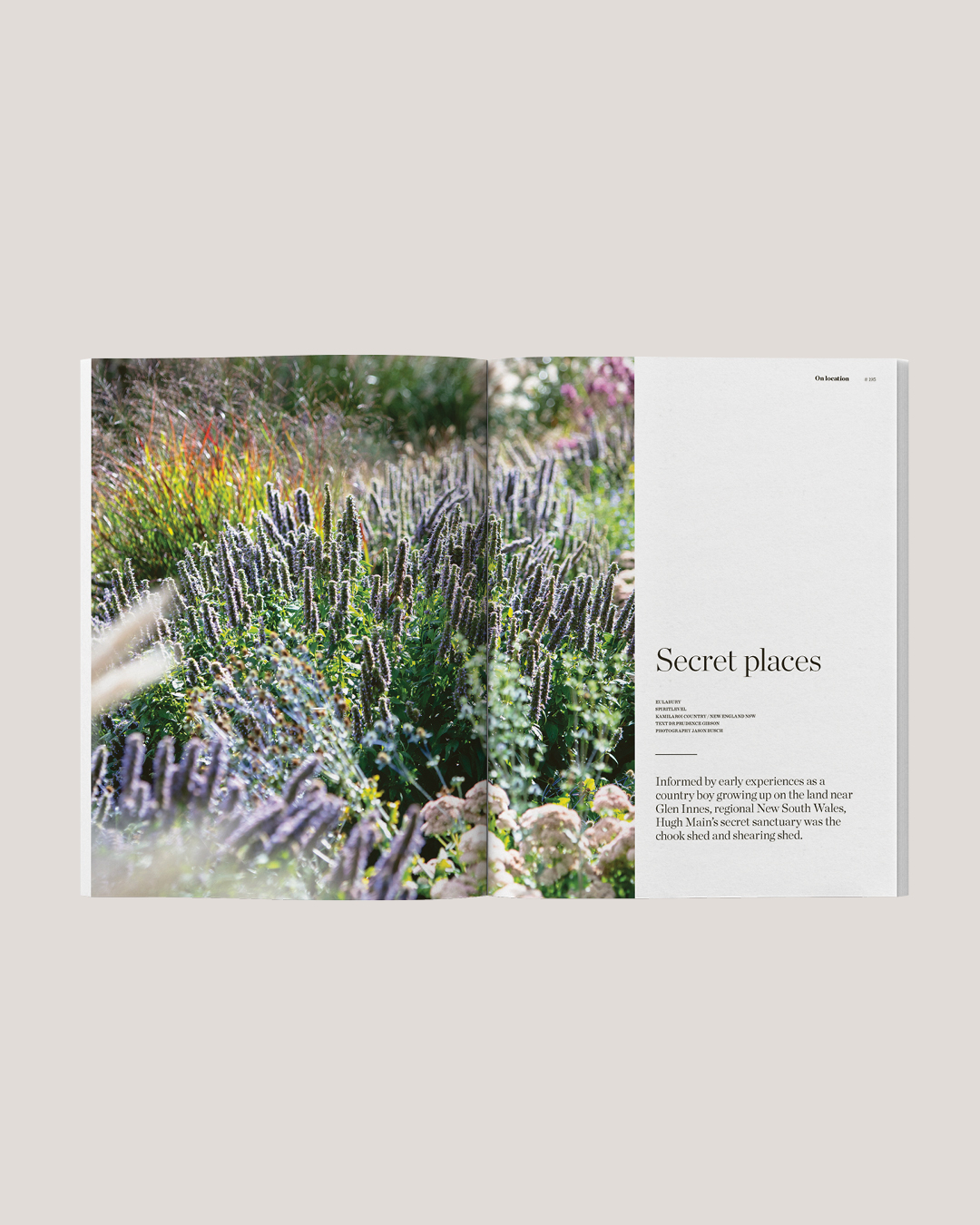When Craig Logan first laid eyes on a V-ZUG oven, he didn’t know the brand. But he was familiar with the potent feeling he was experiencing. “It was love at first sight,” he declares. An accountant by trade and entertainer extraordinaire by choice, Craig was looking for an appliance that would elevate his culinary endeavours. Although he admits it was all about the looks to begin with. “Even before I knew how it worked, I knew I had to have one,” he laughs.
Finding the flow
This initial spark quickly flourished into something more profound when Craig discovered the oven’s collaborative versatility. “It was both daunting and exhilarating,” he enthuses, acknowledging the learning curve switching from his old “fan forced 180”. The payoff, though, was remarkable. For a culinary enthusiast with no formal training, Craig’s skills and confidence grew exponentially.
Soon enough, the intimidating sous vide method became his go-to, and he vividly remembers using the automated BakeOmatic function for the first time. Fifteen minutes into the cycle, the loaf cake was browning – and the panic set in. Every instinct told him to intervene, but he trusted the meticulously calibrated program instead. “It cooked beautifully,” he laughs. “As you go along and things just work, you get more confident.”
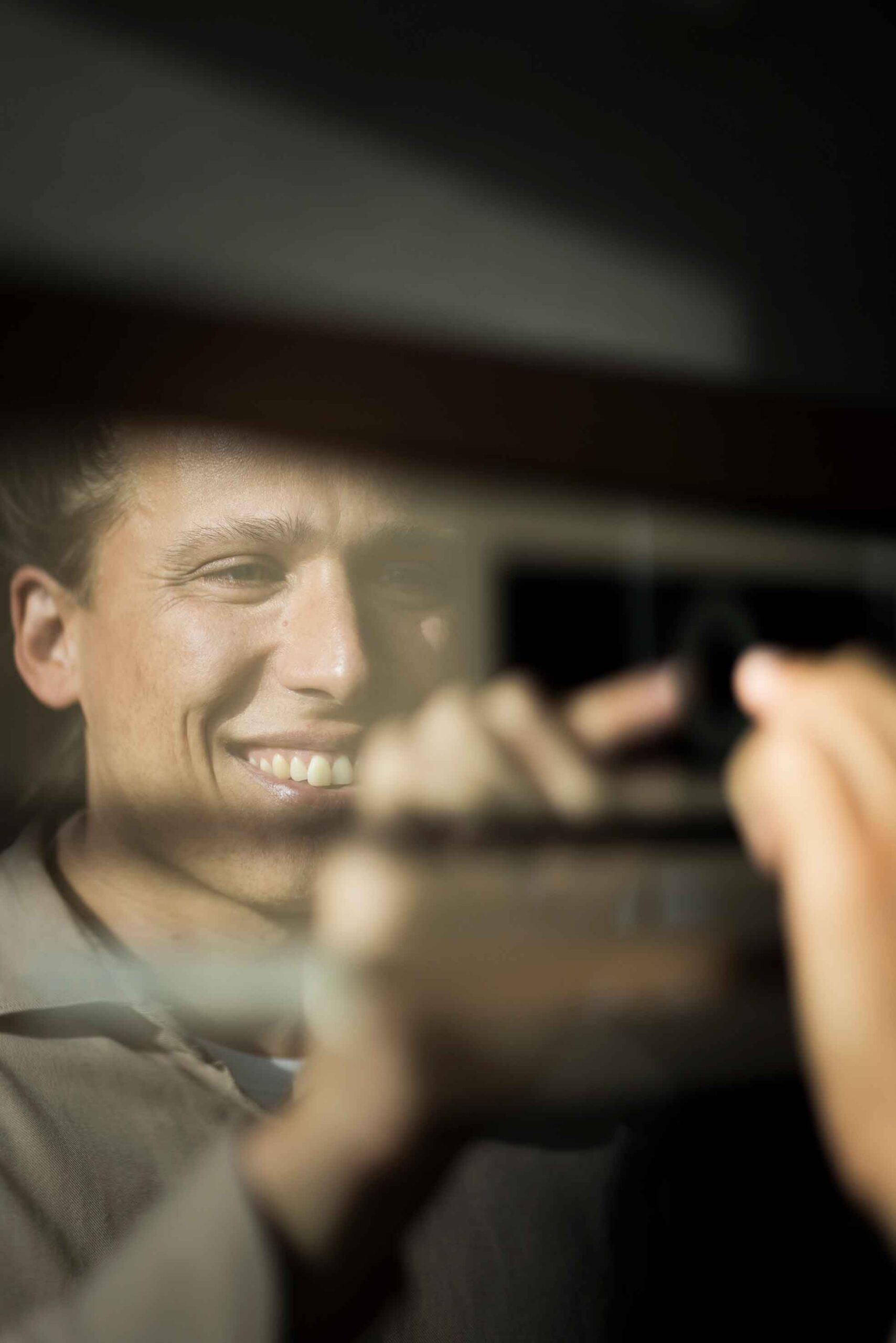
This empowering feedback loop, V-ZUG’s User Experience Designer Kevin Perlinger reveals, is entirely deliberate. He likens this effortless way skills develop when the next culinary challenge is just outside your skill set to a state of flow. “It’s like Duolingo,” he smiles. “It makes you think a bit, but not too much. And these small wins along the way make you want to explore.” And Craig, who left accounting behind to join V-ZUG’s Gourmet Academy, is an embodiment of this evolution. “Now, it’s second nature,” he says. “It’s so easy.”
Purpose over art
For Kevin, this fluid ease is anchored by clarity of resolve. “We don’t make art,” he states. “Design serves a purpose.” In contrast to industrial design’s desire to attract attention, his Holy Grail is an interaction so seamless that people barely notice the design. “It’s not about creating an experience so people can appreciate the process, but, rather, so they can enjoy themselves as a cook,” he smiles.
The oven’s streamlined interface, which Craig describes as “as intuitive as an iPad”, is an apt reflection of this ethos. To avoid data overload common in complex technology, the screen always displays the same manageable amount of information. This intentional approach helps create a predictable and natural interaction regardless of the user’s culinary skills or habits – whether, Kevin borrows a familiar dishwasher metaphor, they’re a meticulous ‘French architect’ or a chaotic ‘raccoon on crack.’ “We want to make the process easy for everyone from the start,” he reveals. And because the interface is consistent across the Excellence range, that same familiarity of interaction extends to spaces with multiple appliances.
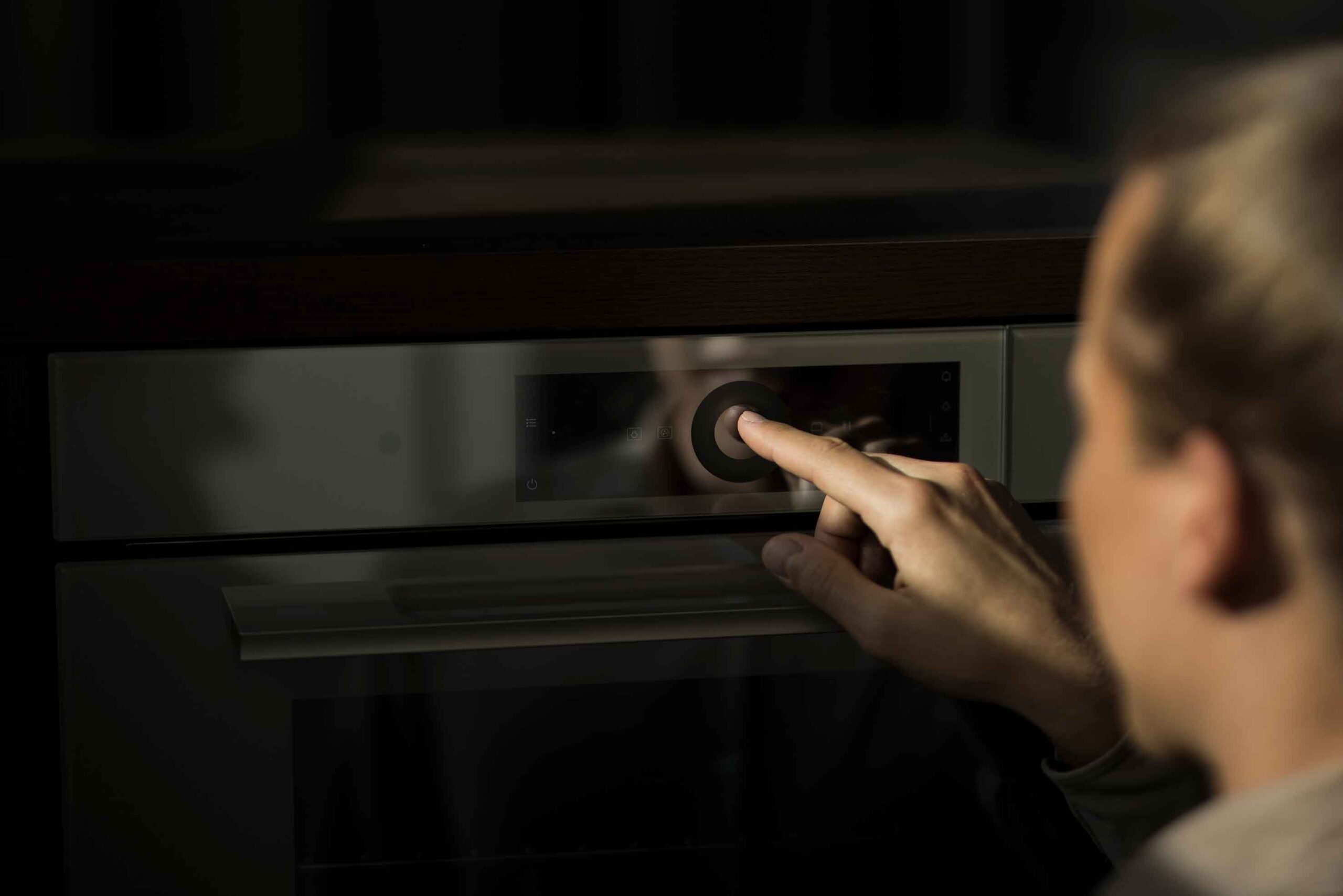
The starting point
This intuitive experience is – literally and figuratively – centred around the Circle Slider, a part-analogue, part-digital focal point gently grounding the interface. By combining the precision of a physical control with the dynamic information display capabilities of a digital screen, this evolutionary device bridges the gap between a traditional appliance and a smart device, making a sophisticated piece of technology feel incredibly intuitive.
And while the display is defined by instant familiarity, underneath lies a story of purposeful innovation that transformed the slider’s physicality from an obstacle into a user advantage, using a patented software hack that solves the challenge of dragging items across a physical divide. “It looks so simple,” Kevin laughs. “But to make everything that evolves around and inside the Circle Slider feel natural, we put the same amount of effort into this feature as the whole product!”
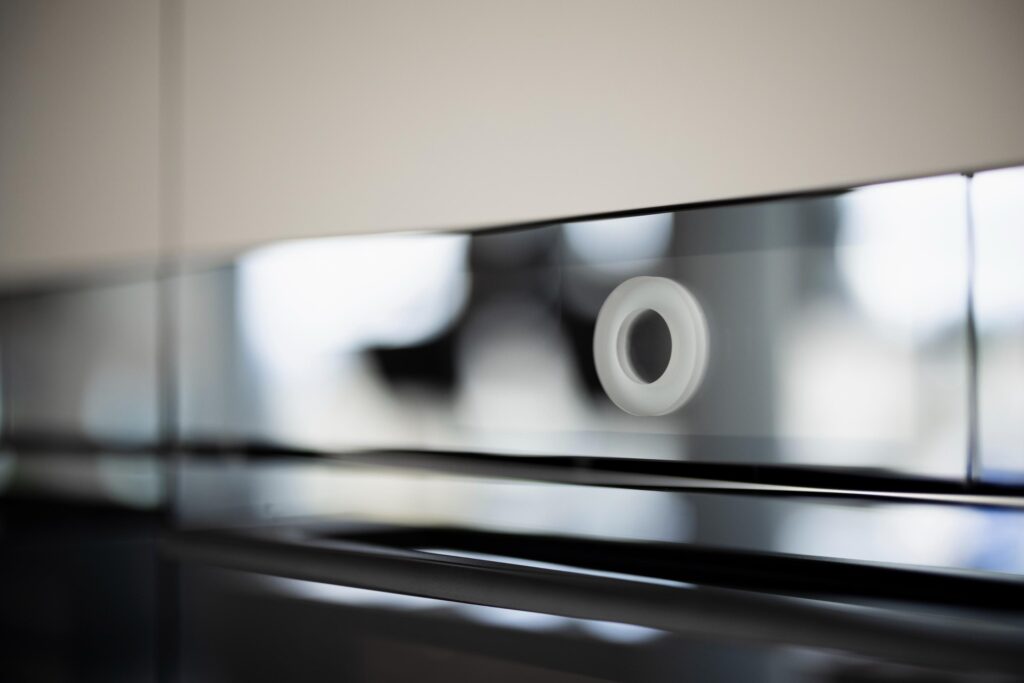
This is the perfect embodiment of ‘simplexity,’ the ongoing process of making the immensely complex feel utterly simple – and measuring the success not by how much users praise the design, but by how quickly they forget it’s even there. And while this deceivingly uncomplicated circular feature centres the appliance’s interface, cooking rarely begins with the oven itself. Instead, it starts with a flicker of inspiration or, Kevin adds, a pang of hunger and the fundamental question: “When and what do I want to eat?”
Decentralised culinary ecosystem
Craig’s habits are a fitting reflection of this vast culinary ecosystem that decouples the experience from the product’s kitchen-bound physicality while keeping its transformative potential at the user’s fingertips.
“On my way home from work, I often pop by the shops to pick up ingredients and flick through the recipes on the app looking for inspiration,” Craig points to the seamless connection between his appliance and the V-ZUG mobile app that transformed his relationship with food. The ecosystem enables him to cook with ease and confidence, making meal preparation more efficient, accessible and sustainable – priceless when making last-minute decisions in the middle of a supermarket aisle.
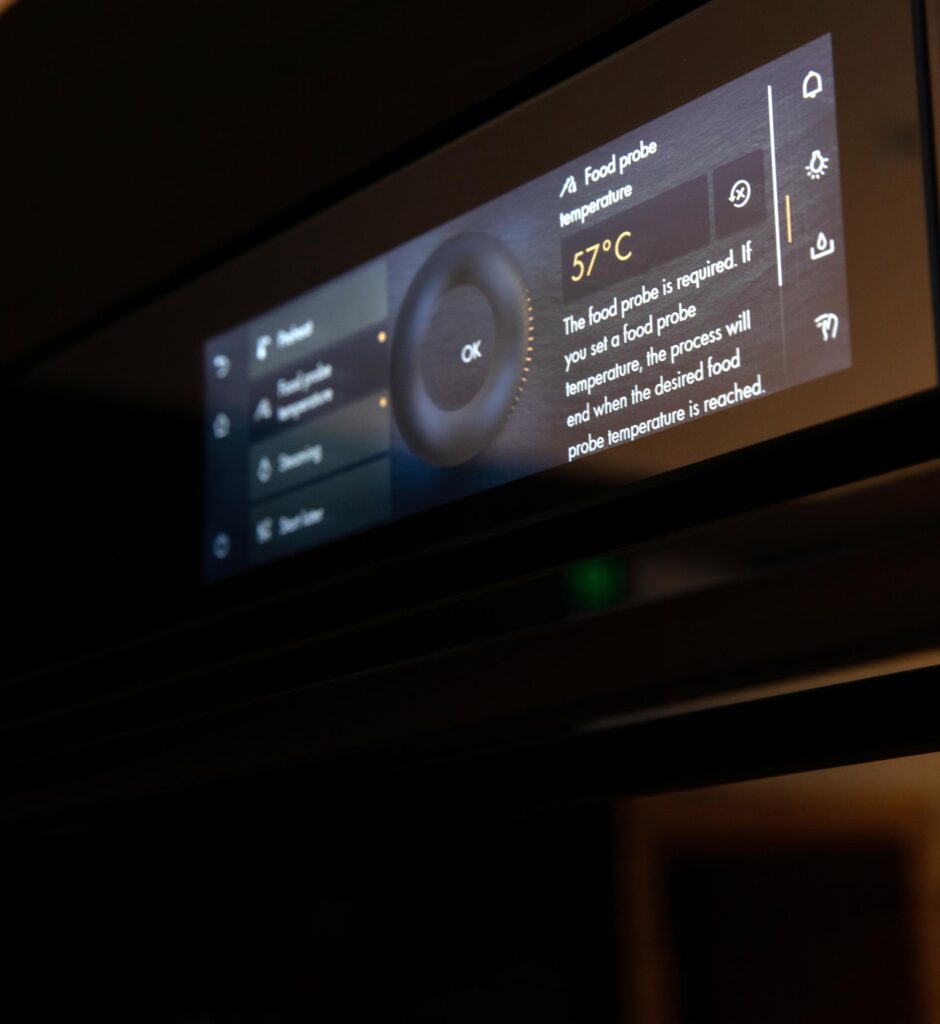
Craig’s home experience has been transformed, too – and it’s not just the fact that he wastes almost no more food because the leftovers reheated using the wonderfully simple, automated Regeneration function are, he enthuses, “divine.” The ability for the app screen to act as a seamless stand-in for the oven itself enables Craig to easily check the progress with a glance at his mobile – and without leaving guests he’s entertaining outside.
This is precisely the role of the app as Kevin sees it: a “co-pilot” for the entire culinary journey that begins long before an oven is preheated and allows cooking to fit organically into the user’s life.
The enduring power of “confetti moments”
What makes this culinary collaborator even more indispensable is its ability to change, grow and develop alongside the user through software updates, which Kevin delightfully reframes as celebratory “confetti moments” that nurture a long-term relationship with the user while enhancing the appliance’s longevity.
“It’s this exciting feeling of, ‘Oh, my oven is ten years old, but now feels brand new because of this update,” he smiles. And as Craig beams about the update that introduced the Braised Meats function – “one of my easy go-to meals,” he declares – a mundane code deployment suddenly seems much more personal.
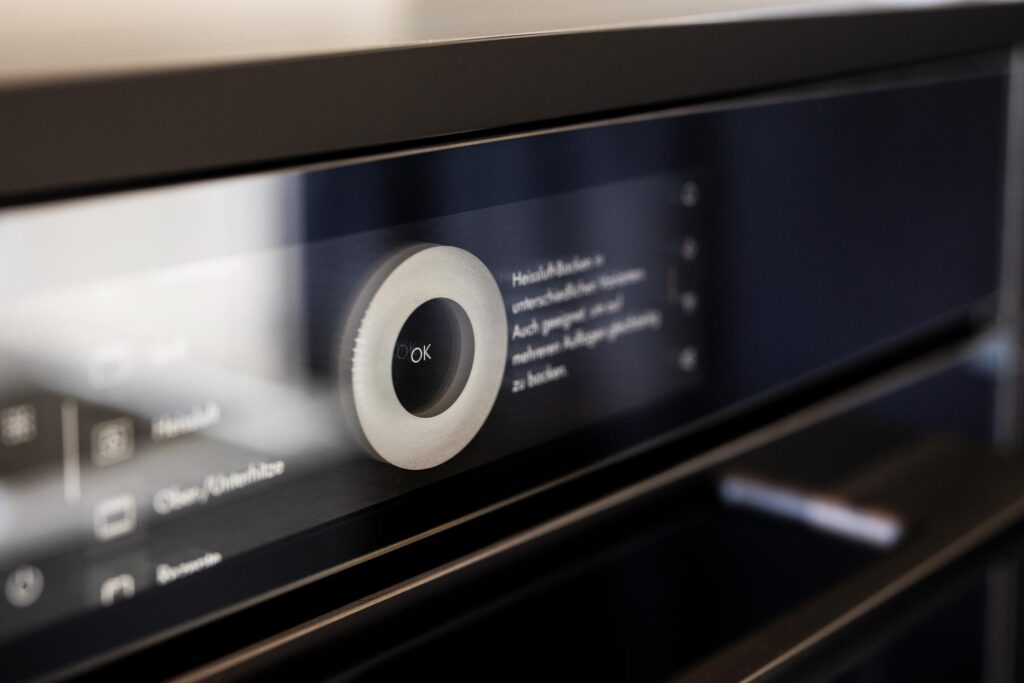
Instant infatuation, continuous commitment
And so, while the sleek aesthetic may spark initial infatuation, it is the invisible, intuitive, evolving user experience that forms the foundation for a life-long partnership. And, in fact, for a collective identity born from a shared joy of culinary discovery.
“People come by the showroom and go, ‘What are you cooking tonight? Oh my God, have you used that function?’” Craig affectionately describes what he calls the “V-ZUG tribe”. That easy familiarity is what seals commitment to the point of no return. “They know how to use these appliances and don’t want any other brand,” he says.
V-ZUG’s ethos, too, is fuelled by the same human core. “We are not a big faceless company,” Kevin concludes warmly. “Each V-ZUG oven is made by a handful of people. In a way, it’s actually handmade.” This sentiment crystallises the entirety of this user experience with disarming clarity: because it’s so deeply personal, it may be barely perceptible – but it’s definitely profoundly felt.
